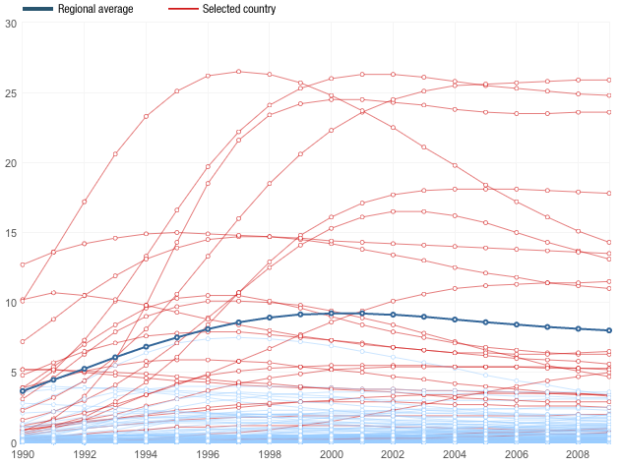Adam Cole and Nelson Hsu for NPR plotted the percentage of people, ages 15 to 49, living with HIV from 1990 to 2009.
By 1990, the world had a pandemic on its hands. In 1997, the peak of the epidemic, more than 3 million people became newly infected with HIV.
Then science struck back. Drugs approved for HIV treatment in the mid-1990s proved profoundly effective, transforming AIDS from a death sentence to a chronic illness. Those treatments, combined with an international commitment to manage the disease by providing access to free drug therapy, led to a steep drop in new HIV infections.
The countries in middle, eastern, and southern Africa stand out in the chart, like Swaziland with a whopping 25.9%, but most areas cluster well below five percent. Although the drop-down filters help some with country selection, the data probably would’ve benefitted from a chart that had a self-updating vertical axis.


 Visualize This: The FlowingData Guide to Design, Visualization, and Statistics (2nd Edition)
Visualize This: The FlowingData Guide to Design, Visualization, and Statistics (2nd Edition)

It’s nice to see that their is a clear progression in prevention from HIV drug science. It turns out that if living in a country with access to recent meds and taken regularly HIV/AIDS is unlikely to be a cause of death. This is especially true for co-morbidities and in fact I’ve shown in a quick and dirty meta-analysis that being diagnosed with obesity in one’s mid-thirties results in more years of life lost than being diagnosed with HIV at a similar age.
http://scienceandrainbows.wordpress.com/2011/07/24/science-and-rainbows-hiv-and-obesity-life-expectancy/